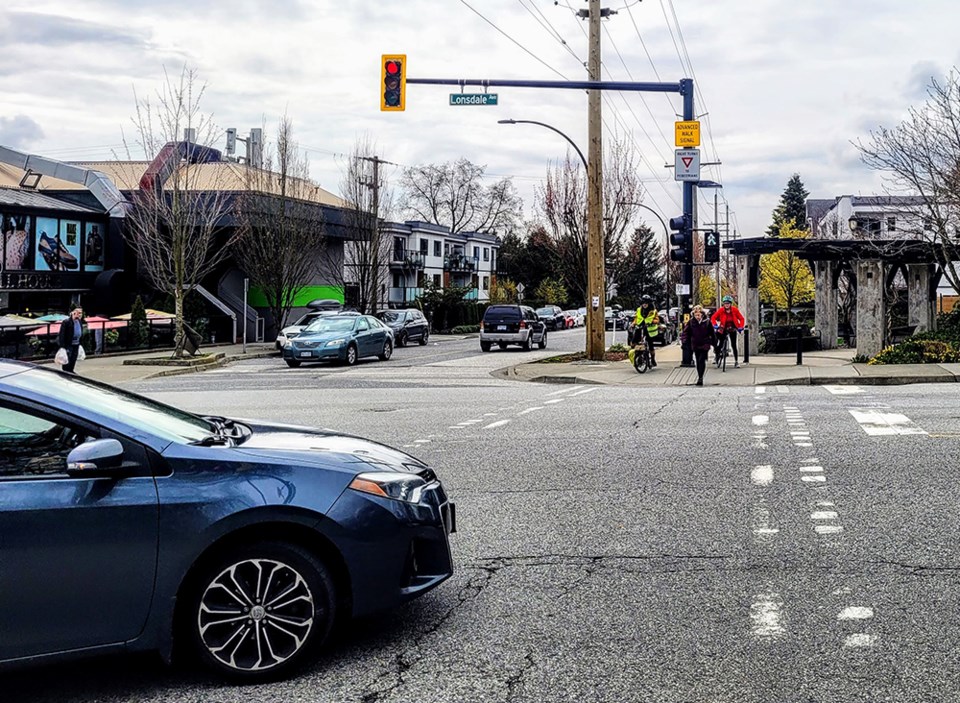I’ve noticed a new signal type at intersections.
If you walk or bike around, maybe you have too? At Grand Boulevard and Keith Road, at Boulevard Crescent and 19th, and at Lonsdale and 21st, 20th and 18th, there are new “advanced walk” signals. There are probably more, but these are the ones I encounter as I hit the streets. Advanced walks indicate to people walking (and people on bikes) that they can cross the road before cars get the green light.
At first I was like, “OK this is weird, I get to go, but the cars don’t.” It took me a bit to learn these lights really boost my safety crossing the street. Why? Because I am almost halfway through the intersection before people turning right or left can accidentally vroom into me. I am simply way more visible to people driving.
Research has shown advanced walk signals do improve pedestrian safety and help reduce conflicts between pedestrians and vehicles at intersections. This is a good thing given what generally happens when metal meets flesh. Ugh. According to the National Association of City Transportation Officials, advanced walk signals can reduce pedestrian-vehicle crashes by as much as 60 per cent, depending on the intersection and traffic conditions.
Another location uses a different method to reduce car-pedestrian conflict. Northbound at 13th Street and Chesterfield, there’s a “no right on red” sign. No right on red means that people driving can’t turn while their through light is red. When the other direction is green and pedestrians can cross, cars can’t turn over the crosswalk into their path. Makes sense.
Given the height of some vehicles and the slope of the land, it’s difficult for drivers to see the crosswalk before you roll “into” the crosswalk. In this case, the stop bar (the big white line) has also been moved back and a green bike box installed for people on bikes to wait for a green light to move north. The net effect is better visibility for people walking across from west to east and better visibility for people biking north.
Advanced walk signals protect people crossing the street in the same direction as vehicles. No right on red helps protect pedestrians from people driving who enter the crosswalk while there’s a green light in the opposite direction.
Phew. There are a lot of rules. I sometimes think that these technical solutions will keep getting more complicated to deal with the ever-escalating danger to people on roads not encased in metal. We’ll totally need self-driving cars to navigate these multiple cascading rules. But also, maybe just the opposite will occur. Promoting pedestrian safety over car travel efficiency can encourage more people to walk and roll, reducing congestion and fostering healthier people. Now, that’s a virtuous circle.
Kudos to the City of North Vancouver for “no right on red” and “advanced walk” intersection improvements. Walk on people.
Heather Drugge is a sustainable transportation advocate who has used her bike for transportation for more than 20 years. She’s got an e-bike now, and maybe a jetpack next. [email protected]



